
Be sure to read our in for test article about the Deviate Highlander for full specs and additional photos.
My long-forked hardtail has seen a little less trail love this winter. I’m having too much fun going fast on long-travel squishy bikes, and the idea of slowing down, even a little bit, to keep the rigid rear-end in check isn’t as appealing at the moment. With slippery winter soil knocking the speedometer back a smidge, it seemed like the perfect time to test a lovely little mid-travel bike from Scotland.
The Highlander frame from Deviate Cycles is the brand’s 140mm 29er, designed to ride with either a 140 or 160mm fork. There is a 150mm version coming out soon that simply uses a different link to add travel, and the current bike can easily have that extra centimeter for a small fee. The carbon frame uses a high single-pivot suspension design that’s often found on longer-travel bikes with DH-length forks. I expected the Highlander to feel limited on the trails where I typically test longer 160mm bikes, and for the idler pulley to potentially add noise and fuss to the system. Additionally, I received a medium frame with a somewhat short 444mm reach, instead of the 473mm large that I expected to be testing, and assumed it would feel like a squirrel running across an acorn pile. I was pleasantly wrong with all that speculation and surprised in a handful of ways.
Geometry numbers on the Deviate site were measured with a 140mm fork, so the reported 66° head tube angle is likely closer to 65° and the 76° seat tube angle is somewhere in the 75° range. The size medium’s 444mm reach is also a touch shorter with the lengthened fork, and the 1194mm wheel base is slightly longer, while the 440mm chainstay length (all sizes) should remain accurate. The super short 410mm seat tube can consume the entire lower portion of a 210mm dropper post, which is something we haven’t seen on many other frames.
Frame details
The Highlander is from Scotland, where they don’t faff about when it comes to mud clearance and frame protection. In the Highlands, if you don’t ride in the mud, you don’t ride, and there has to be ample space for slop. I mounted a hefty set of Onza Porcupine RC 29 x 2.5″ mud spikes on the bike that helped it stick to our unseasonably wet trails, with plenty of space for the brown stuff. I did manage to clog the rear end a few times after riding through mud followed by deep leaf piles. It was the sort of sludge no rear triangle could swallow.
Highlander owners will want to wash the bike somewhat regularly. The tight space between the front and rear triangles, and around the linkage and shock body can pack with mud over the course of a ride, and leaving it there will undoubtedly affect suspension performance and maintenance intervals. Each time I’ve washed this bike the linkage and shock tunnel released a similar amount of mud to that caked on the rest of the frame. I haven’t noticed any suspension issues while riding with that extra soil packed in the nooks, and a quick bath after every muddy ride should keep it that way.
The lower downtube and inner seat stay are covered in a thick bang-up material to reduce impacts and keep the bike quiet, and they do those jobs well. Paired with the tube-to-tube cable routing of the few internal cables this bike is notably quiet.

The shift and brake cables pass under the top-tube, clamped in place by a clean set of alloy braces that are easy to remove on maintenance day. Only the dropper cable slides through the entire frame, while a piece of the shift-cable runs through the seat stay briefly.
There’s sufficient space for a small water bottle and gear stash in the size medium front triangle, though a side-loading bottle cage may be required to easily access the bottle. The two larger frames should have enough space for a larger water bottle.

Several of the riders I ran into on the trail mentioned the carbon frame’s robust tubing, saying that it looks overbuilt — in a good way. I found the Highlander frame plenty stiff for my liking, with the usual amount of rear end flex that’s built into most high-end carbon mountain bikes.
A medium Highlander like this one, with Crankbrothers Mallet pedals and heavy mud spikes mounted, weighs roughly 15kg (33lbs). This bike could be built significantly lighter, shaving more than a pound per tire with a summer tread, but the heft feels just right for the muddy gravity riding it’s capable of.
Build spec
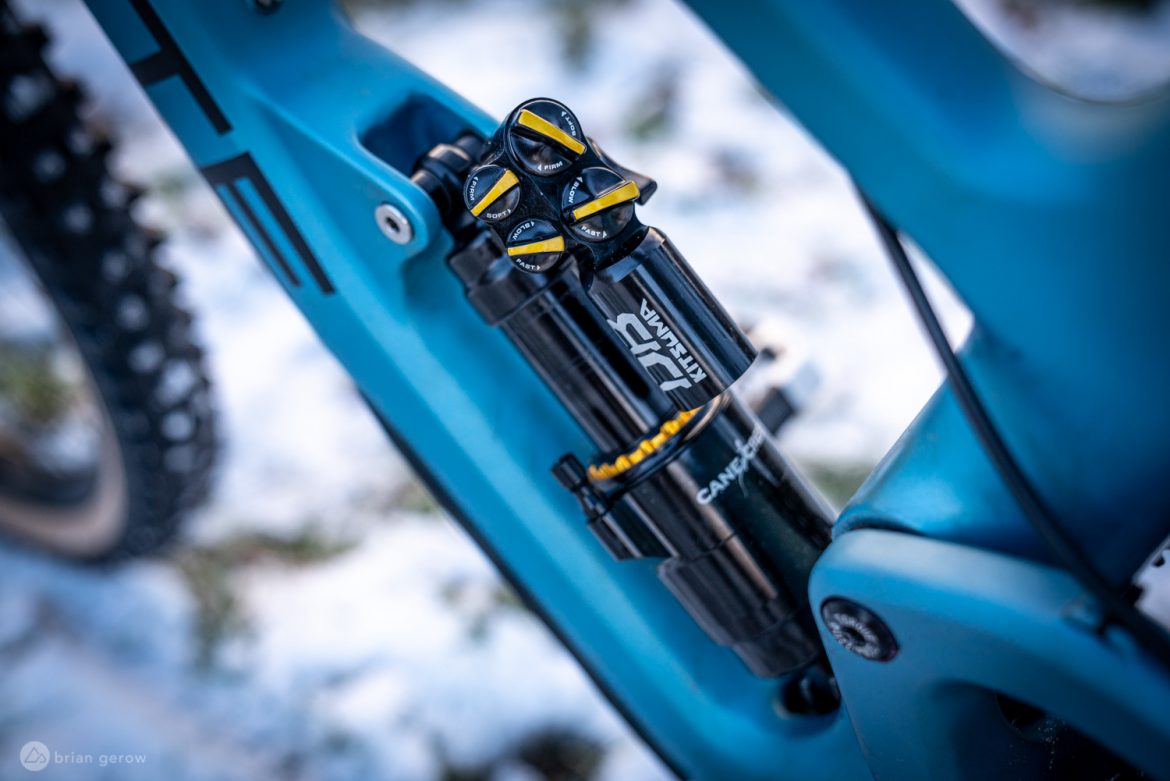
Highlanders are sold as a frameset, with or without a shock. The carbon frame alone retails for £2,699.00 GBP and ranges from £2,849.00 to £3,099.00 with a selection of coil or air-sprung shock options.
The test bike that Deviate sent over has a full Shimano XT drivetrain apart from the SLX shifter that I added, and a trusty set of 4-pot XT brakes. The ever-adjustable Cane Creek DB Kitsuma shock is paired with a 160mm Helm fork, offering some of the smoothest suspension on the market. The bike’s controls are finished off with a OneUp carbon bar and a 210mm dropper from the same brand. Every time I get to try a longer dropper I don’t want to return to my shorter travel up-downers. This massive drop genuinely blew my mind with the BMX-esque ability to lean the bike deep into turns and cock it sideways in sloppy ruts. I’ll remain in the “more drop is better” train as long as I get to dance down the trail like I can on this bike.
Deviate was a little short on components due to booming sales, so the shifter, saddle, wheels, and tires are all from my stash. I’ll be reviewing the Onza Porcupine RC tires and Syncros Revelstoke 1.5 wheel set in the near future.
Suspension
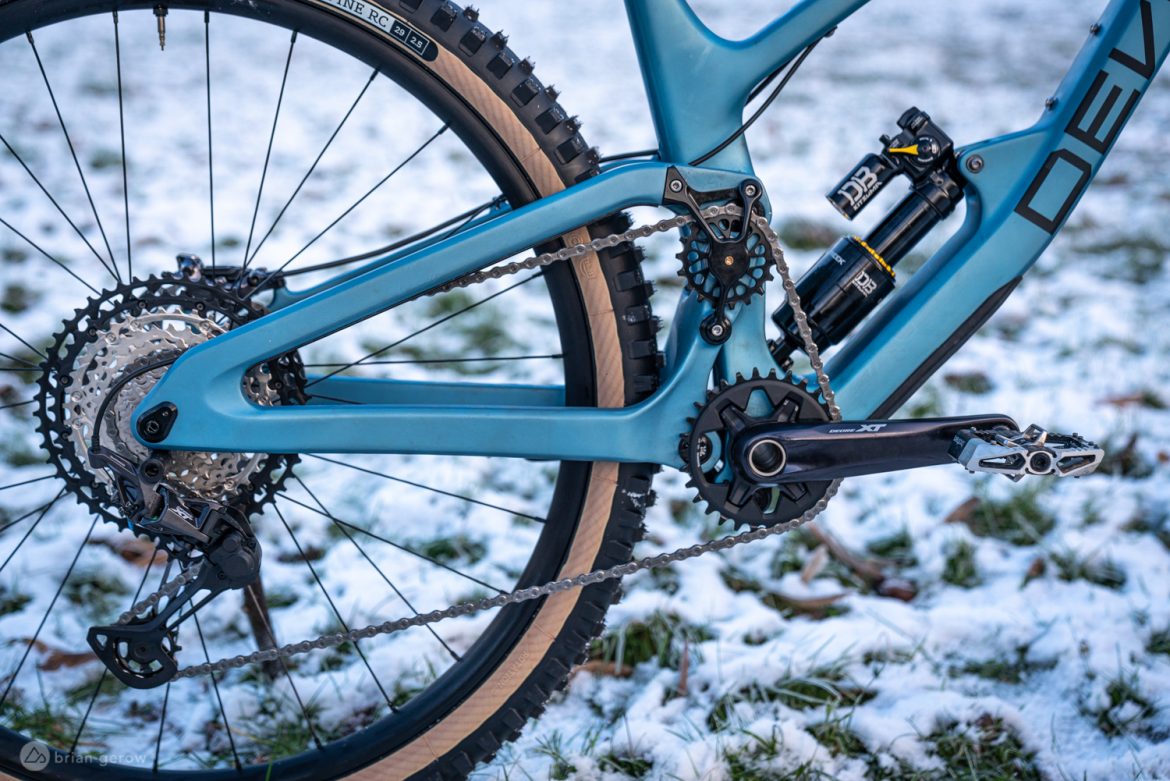
The video review, posted in the “Trail Time” section below, shows how this bike’s linkage moves as the suspension compresses, and how the cranks don’t. More on that later. The rear end offers roughly 25% progressivity, making it a perfect fit for either coil or air-sprung shocks.
The Highlander uses a high single-pivot suspension design which gives the bike a fully rearward axle path. While wheels moving backward might seem counter-intuitive, it allows the suspension system to better absorb impacts instead of fighting them by moving forward — as many other suspension platforms do. Additionally, the rearward axle path more closely follows the rearward motion of the front axle as it compresses, giving the bike a nicely composed and balanced manner. It’s a little like absorbing a punch in martial arts or boxing by moving the punch-receiving body part in the direction of the punching force, thereby absorbing less of the initial force. With less force from those stone and root punches, the bike can continue with more of its forward momentum.


With close to 100% anti-squat, the Highlander pedals with very little bobble in its step. The suspension is plenty active for technical climbs, and there’s rarely a need to close the low-speed compression circuit. If you think of it like a Trans AM or similar gas-guzzling car, the rear end doesn’t squat down and bounce when you hit the gas. Instead, it doles out power smoothly, maintaining pedaling grip when it’s needed most.
Since the bike’s rear end doesn’t wallow under a hefty pedaling load, there should be the tradeoff of a heavier dose of pedal kickback. The forces that keep the rear end from bobbing about under load come, in part, from the drivetrain, and with high anti-squat riders will typically feel trail bumps in the pedals any time the freehub is engaged. Fortunately, the magical powers of the idler pulley eliminate pedal kickback almost entirely. That’s right, thanks to the little extra pulley above the chainring there is nearly zero pedal kickback on this bike, no matter how hard and fast the suspension compresses while pedaling. That means there’s one less force bounding your body around while you ride, leaving the bike to feel more composed and you with more energy to go further.
I expected that the extra wheel in this system would cause issues, and require additional maintenance. I was incorrect. No matter how much mud I packed in the rear end that little pulley worked just fine, and with a properly lubed chain it was dead silent. I also thought that there could be issues with the fact that the chain wraps over fewer chainring teeth, but I haven’t had a single issue with the drivetrain on this bike. Nada. Niente.

On the anti-rise side of squish, Deviate seems to have nailed the numbers with this bike. When you fly into a turn too hot, dump speed and lean in to hope for grip it’s helpful if the rear end compresses along with the fork to some extent. This one does. The full chassis kneels just enough to roughly match the fork’s dive, compressing the bike into the turn to spring out. Braking forces do still seem to affect the suspension performance to a degree, though less so than with other many of the other frames I’ve been testing.
Cornering at speed on this bike feels fantastic, and that’s partly due to its ability to compress rather than pitching the rider forward. Of course it all depends on how you ride, and where you place body mass. The Highlander certainly favors a more aggressive position and pilot.

Trail time: Short bike numbers with long bike capabilities
Often times when I read the words “it feels like the bike has more travel than it does” I chuckle a bit, assuming there’s some hype tied up in the phrase. The writer was excited and surprised, and likely loved the bike. I’ve probably written that phrase at some point. While that sentiment is occasionally accurate, what’s often going on is that the bike in question functions differently, and those differences feel better on the trail than other bikes with the same travel numbers.

The Highlander is one of those unique bikes. While it doesn’t feel like there is more than 140mm of tail travel, it does feel like the system utilizes those millimeters better than some. Running proper sag, I have managed to bottom out the rear-end several times like I would any 140mm bike. That’s the cost of shorter travel. To its benefit, the Highlander’s decidedly supportive platform makes every bit of squish before that bottom out feel composed and stable — like a bike with another 20 millimeters of fun.
All of that suspension praise is most notable in rough rock gardens, where the rear end of many a 140mm bike will start to dance around, pack up, and slow down. The “go with the flow” nature of a rear axle path allows the bike to fight impacts far less, which means improvements in both speed and traction. When you huck to a pile of stones on this bike it feels smooth, moving through square edges quickly like a longer travel platform often would. The suspension doesn’t pack up as quickly, and instead maintains its ride height and readiness where a lot of mid-travel machines would be overwhelmed.

The Highlander also doesn’t depend entirely on its shock tune and spring-rate for support. Some single-pivot platforms lean heavily on their shock for support, but this one includes ample progressivity through the linkage so there’s no need for extreme air pressures or volume spacers in the shock. I only bottomed out the shock because I was riding as fast and hard as I would on a longer travel bike on the same trails. Even when it does reach the bottom there’s no harsh cutoff or clang. The formidable Cane Creek DB Kitsuma shock ramps up nicely with this suspension platform, adding to the fact that this bike is even better on the trail than it looks on paper.
With a little less pressure on the shock, the system is highly tunable, and small compression and rebound adjustments of two or three clicks can make a recognizable difference. This also means that riders who are between spring rates for a given coil shock can choose the lighter spring and tune in a touch of added compression damping to find the sweet spot, instead of riding an oversprung shock all the time.

The medium Highlander frame has a shorter reach than anything I have ridden lately, which might make it seem like a “playful” platform that would do well on flowy park trails. Instead, this is a trail smoothing speed bike, better suited to riders who want to see how quickly the trees can fly by more than they want to fly off features. While you can certainly get it off the ground when you want to, there are other bikes that will get invited to that party first. This bike wants to run from the top of the mountain like it’s being chased, and it’s inarguably good at it.
As for that reach measurement, there are no interruptions inside the short carbon seat tubes, which means sizing for these bikes is largely determined by the rider’s preferred reach measurement. The medium I rode felt great on tight and technical trails at winter speeds and works well enough for my 174cm height and 76.2cm inseam. If I were to buy this bike I would definitely select the size large, with its 473mm reach, and purchase both the 140mm and 150mm shock links that use the same shock to achieve either travel. Then, with an adjustable-travel fork that can swap between 140 and 160mm in a matter of minutes, one could truly own two bikes with a single frame. Maybe the 140mm setup would suit slower winter trails, and the 150/160mm built could kick up the dust on faster summer dirt.
That’s already a load of info and analysis, but there’s one last geometry note to mention. The headtube angle on this enduro-race-able bike is not the slackest, and I have no complaints about it. At roughly 65°, the bike is still able to save those O.T.B. close calls, while it feels better than a lot of frames with modern geo on the tighter stuff. The slightly longer chainstays add to its overall stability, while they’re not long enough to hamper its tighter cornering capabilities.

Regardless of the travel option, the Highlander is a do-it-almost-all bike for the right rider. It could be built up lightweight for faster peddlers, or hefty for gravity athletes. The advantages of this suspension platform are not to be overlooked, as they truly do enhance the trail experience. The new 150mm link will be available soon. Head over to Deviate for more info on this remarkably capable bike.

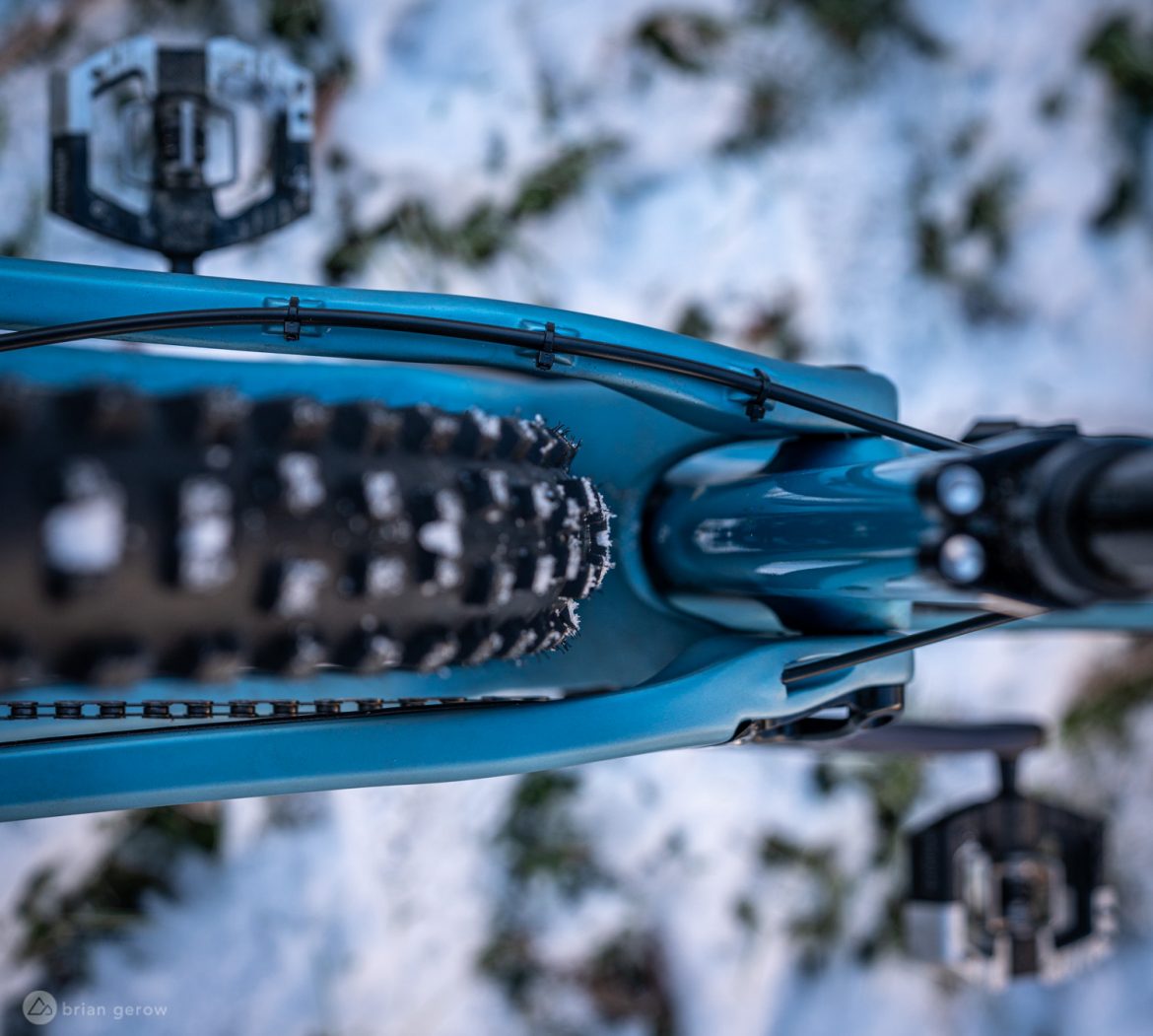
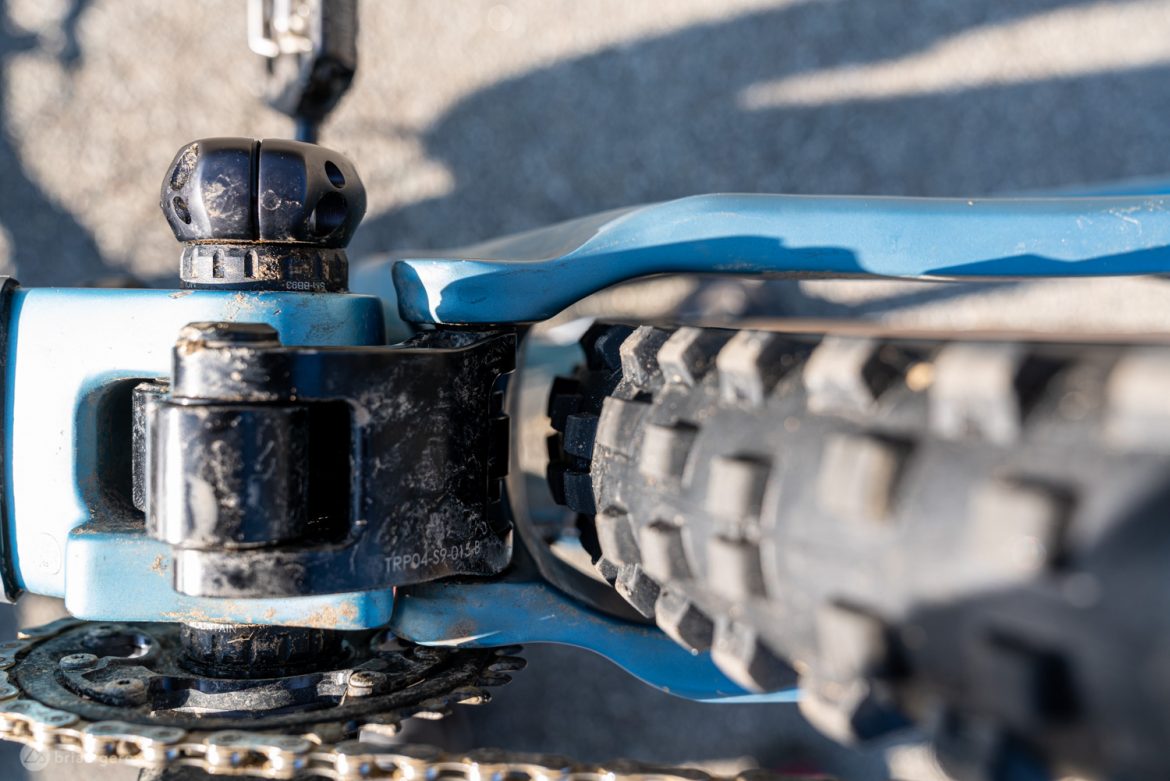
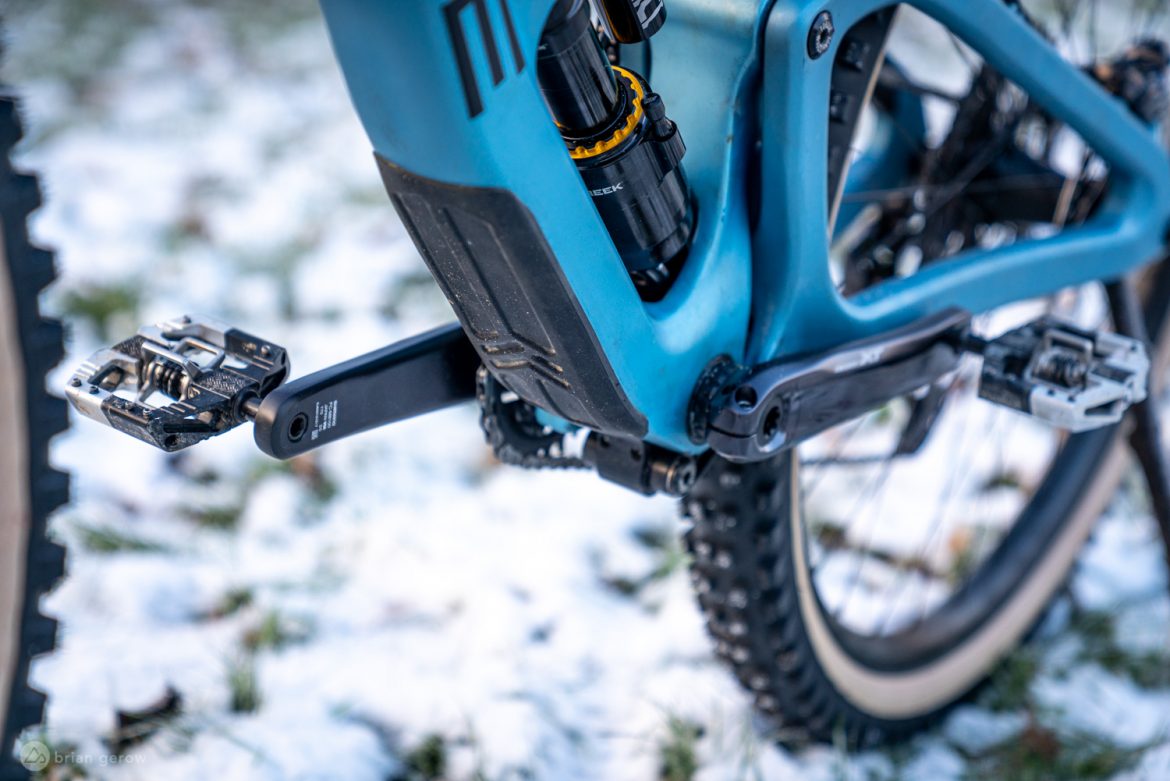
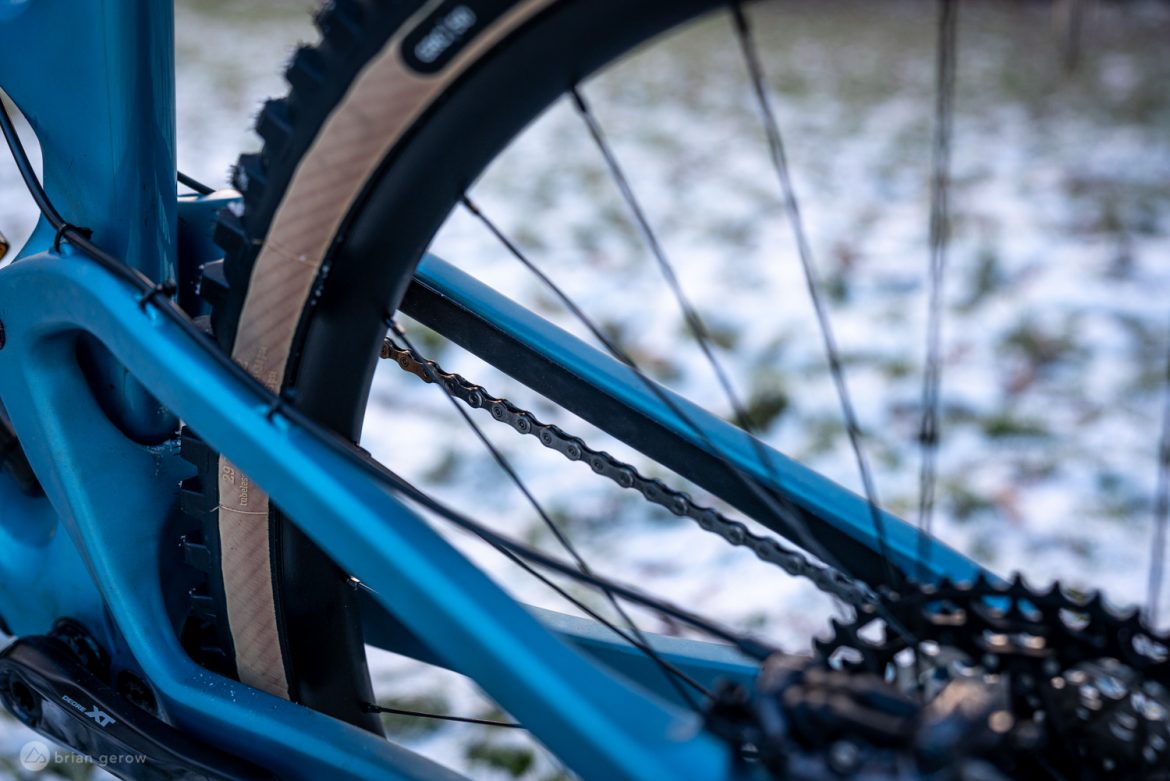
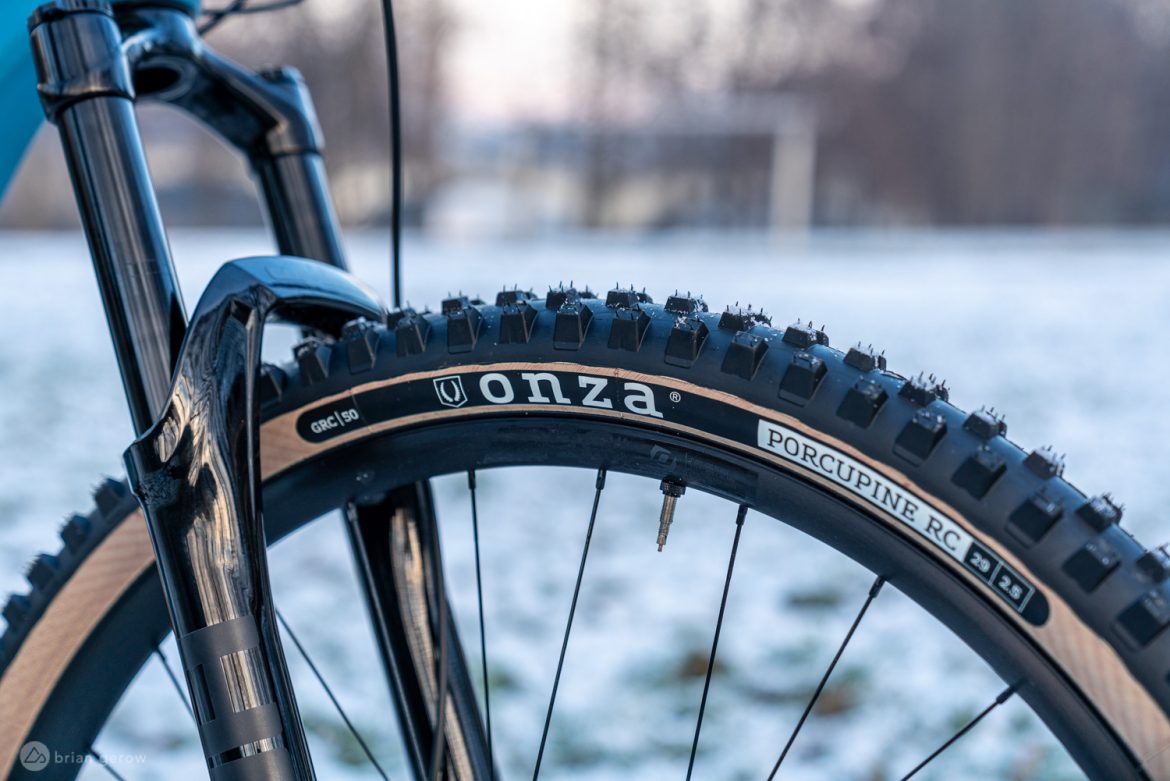





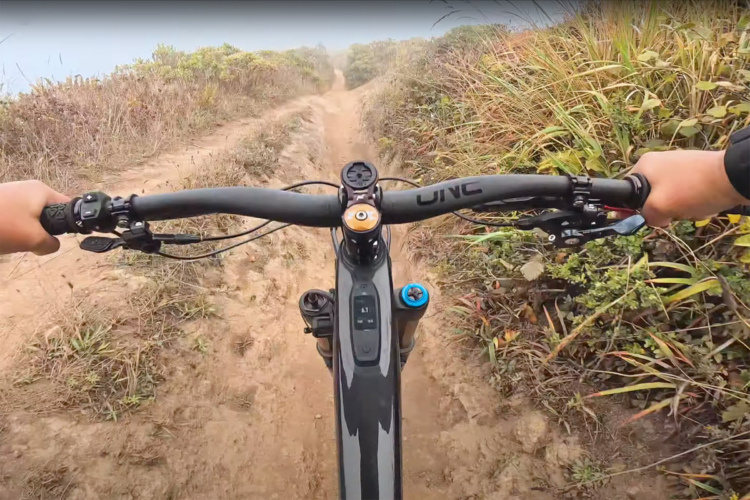
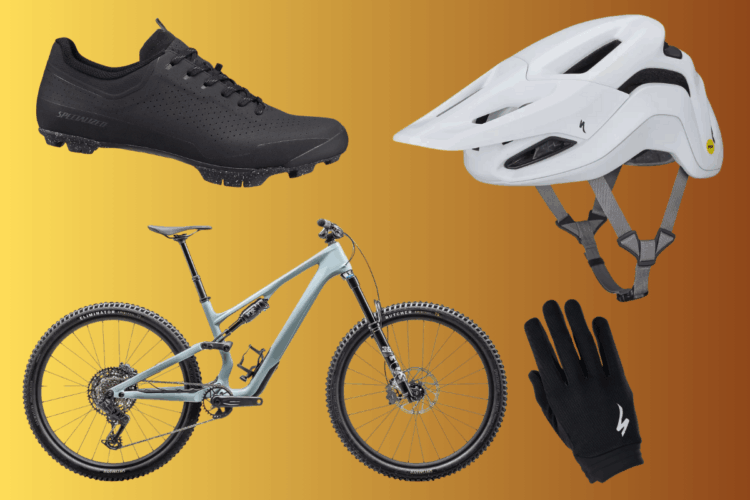
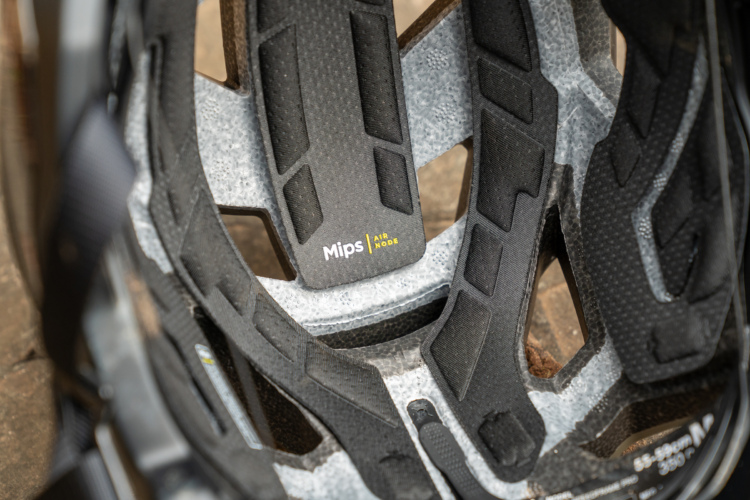
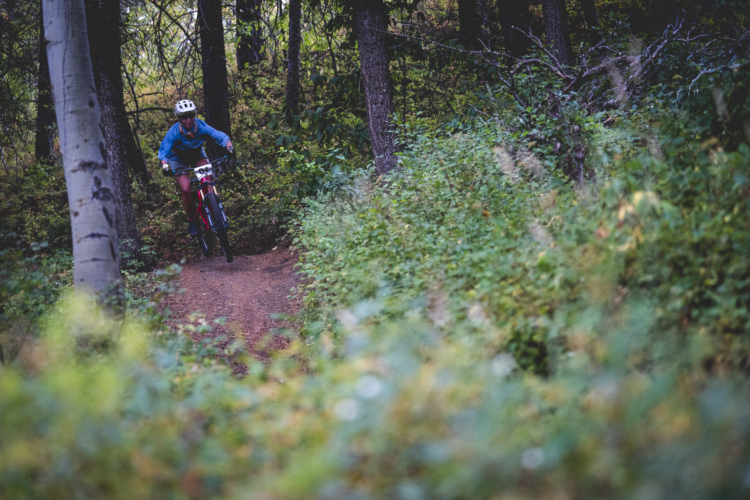

0 Comments